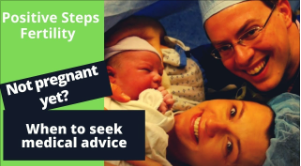A fundamental question to fertility that I am often asked, is what is the best approach to Diagnosing Infertility in women?
Diagnosing infertility is always dependent on the source of the problem. If you don’t know what it is, it’s hard to fix. You need to have the proper testing done before you decide on the treatment.
When it comes to fertility testing, you have to know the answers to questions like these:
- Are there sperm?
- How many eggs are there? What is the quality of those eggs?
- Are the fallopian tubes open?
- Is there a receptive place for the embryo in the uterus?
The answers to these questions then guide how you go about treatment.
Now, if the problem is simply low sperm, some people go with just insemination. In other words, if sperm weren’t finding the egg and you increase the number of sperm to find the egg, that goes a long way.
If, however, the woman was never releasing eggs, you might do ovulation induction, (ovulation stimulation is the use of hormonal therapy to help your ovaries release an egg). This process can improve egg generation from 0 to 1 per month, which makes a huge impact on a woman’s fertility. Other tests, such as anti-Mullerian hormones (AMH) or an Antral follicle count look at age and egg count to determine how they affect fertility.
For many people, unexplained infertility is a combination of increasing the number of eggs and the number of sperm through a blend of what’s called superovulation.
Superovulation is the process of inducing a woman to release more than one egg in a month and timing the insemination to increase the sperm in the reproductive tract.
Ovulation induction and superovulation medications are used to stimulate the follicles that house the eggs in the ovaries in order to predictably enhance egg development during the menstrual cycle. Other medications that control the time that a patient will release the egg or eggs are also used so that intercourse or intrauterine insemination can be timed appropriately to best enhance a patient’s chances of achieving a successful pregnancy.
Often these methods are a low-cost, low-tech way of revving up fertility.
The challenge is that a lot of people end up struggling with their stimulation, meaning they don’t get very many eggs, or they are making it very expensive. The bottom line is that couples have to look at dollars spent per pregnancy achieved. This is often tailored to each individual when diagnosing infertility.
IVF (in vitro fertilization) can be super powerful. If you are getting 20 eggs in a month and putting the sperm with them, all of a sudden a lot of embryos appear, and it is easy to find healthy ones and put them back. That goes a very long way, and is particularly important for tubal disease, where sperm and egg don’t naturally meet.
However, if you’re doing IVF and there’s diminished ovarian reserve, (when women are running low on eggs) then IVF can be a poor approach. For example, this approach might take 10 IVF cycles for the person with two eggs to get the same yield as the person who had 20 eggs, and who is otherwise identical.
This is not to say that IVF can’t be the right fit, but you have diminishing returns from IVF relative to those with more robust or healthy ovarian reserve.
Again, getting answers to the key inputs to fertility is essential before deciding on a treatment path. When diagnosing fertility, ask your fertility specialist what kind of results they are getting for the various treatment approaches:
- What are their pregnancy rates with doing nothing, and how does that apply to where you are personally?
- What are their success rates with oral medication insemination?
- And what are the success rates with in vitro fertilization?
There are other options, but often the core three mentioned above are the most efficient routes to getting people where they want to be.
Share knowledge to empower others.
Let us know if you have any questions concerning your fertility journey. We would be happy to help, so please feel free to reach out to us today.
Dr. Preston Parry
Positive Steps Fertility
#Infertility #DOR #ovarianreserve
All content on this Web site, including medical opinion and any other health-related information, is for informational purposes only and should not be considered to be a specific diagnosis or treatment plan for any individual situation.




